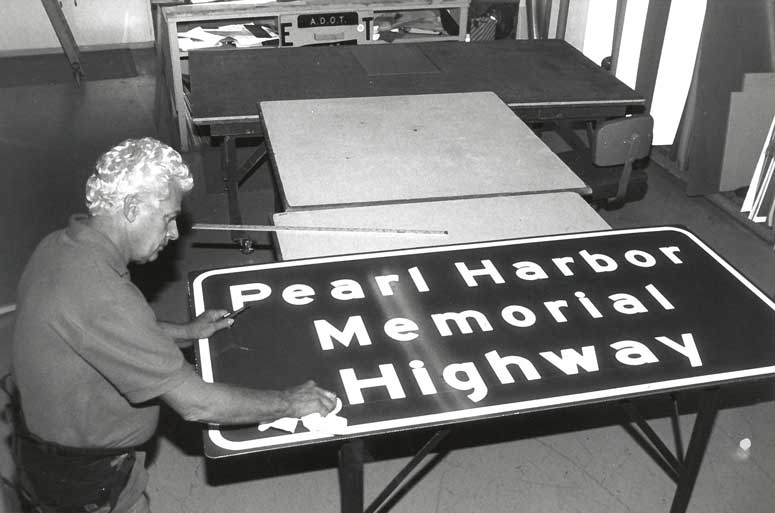Look Back: How I-10 became Pearl Harbor Memorial Highway
Look Back: How I-10 became Pearl Harbor Memorial Highway

In Arizona, Interstate 10 goes by a few different names.
One stretch is called the Papago Freeway, another is known as the Maricopa Freeway, and outside of the Valley it’s the Pearl Harbor Memorial Highway.
But that last one is more than just a name – it’s a designation that honors survivors of the attack on Pearl Harbor.
The Dec. 7, 1941, attack launched the U.S. into World War II. But what you might not know about is the impact the war had on our state’s transportation system.
Here’s what the Arizona Transportation History report has to say about that era:
The Second World War brought highway work in Arizona almost to a standstill. Even before America’s formal entry into the war, the federal government had been urging the states to concentrate their highway work on roads that served military installations or were otherwise considered critical for defense. Most Work Projects Administration (WPA) funding for road construction after 1940 was channeled to defense-related projects, and federal highway officials used their approval authority over each state’s federal aid program to steer all highway work toward similar projects.
This shift in emphasis was formalized with the Defense Highway Act of 1941, which was enacted just before the attack on Pearl Harbor. Replacing the peacetime federal highway aid bill, the 1941 legislation established a national Strategic Network of Highways and limited federal highway funding to roads that were part of that network. As a result, most wartime highway funds were spent on building and maintaining access roads to military bases, war industry factories, and mines that were deemed necessary to the war effort. One such project in Arizona was a segment of State Route 92 constructed between Fort Huachuca and State Route 82 to the north.
State funding for highways was affected by the war as well. In 1933, the Arizona Legislature had repealed the road property tax, leaving the Arizona Highway Fund dependent on the five-cent-a-gallon fuel tax, vehicle license fees, and various fees and taxes imposed on trucking companies, bus lines, and other “common carriers.” Once the war began, automobile travel in the state dropped precipitously, pulling down the gasoline tax revenues that Arizona depended on to finance road projects.
About 50 years after the war ended, Arizona legislators passed a resolution designating the portion of I-10 that runs through Arizona as the “Pearl Harbor Memorial Highway.”
The photo above is from the December 1995 issue of Newsbeat, ADOT’s employee newsletter of the day. It shows ADOT Sign Fabricator Gene Draper as he puts the finishing touches on a “Pearl Harbor Memorial Highway” sign.
According to Newsbeat, the first sign was unveiled at a special Pearl Harbor Day ceremony on Dec. 7, 1995, at Wesley Bolin Memorial Plaza near the USS Arizona Memorial. At that time, more than 365 survivors of the attack on Pearl Harbor lived in Arizona.
